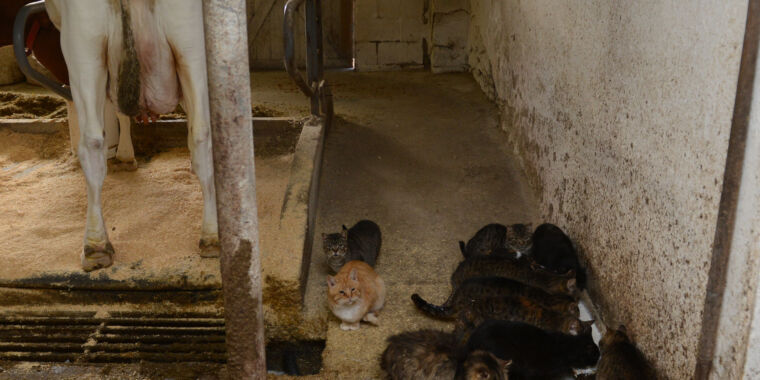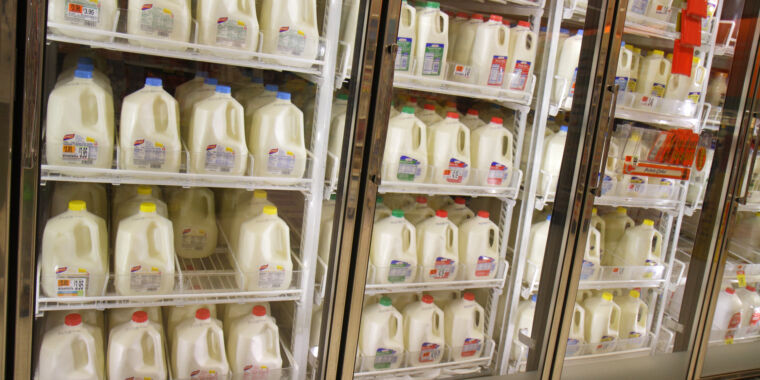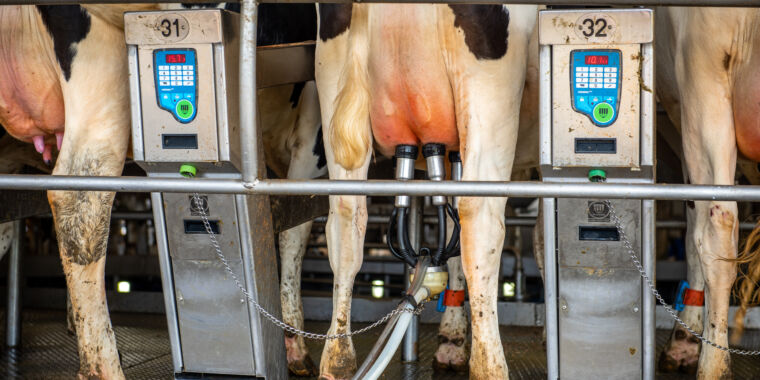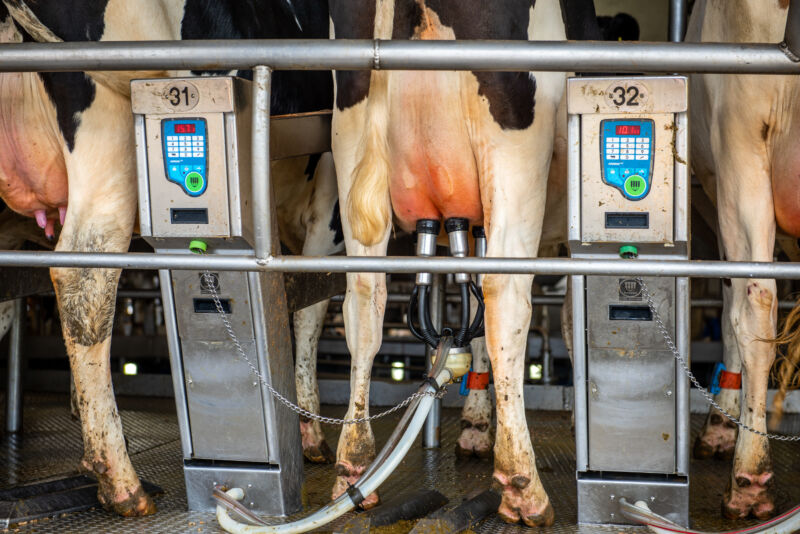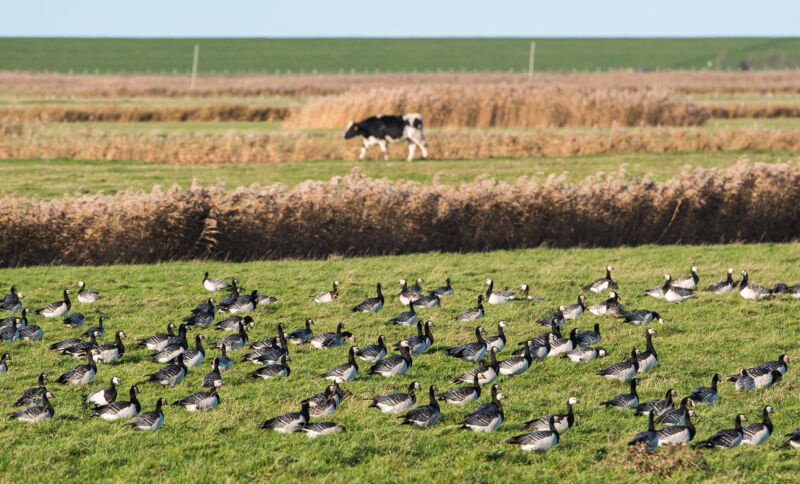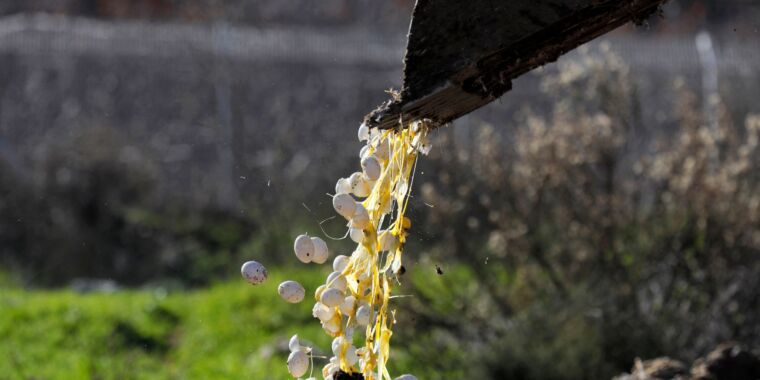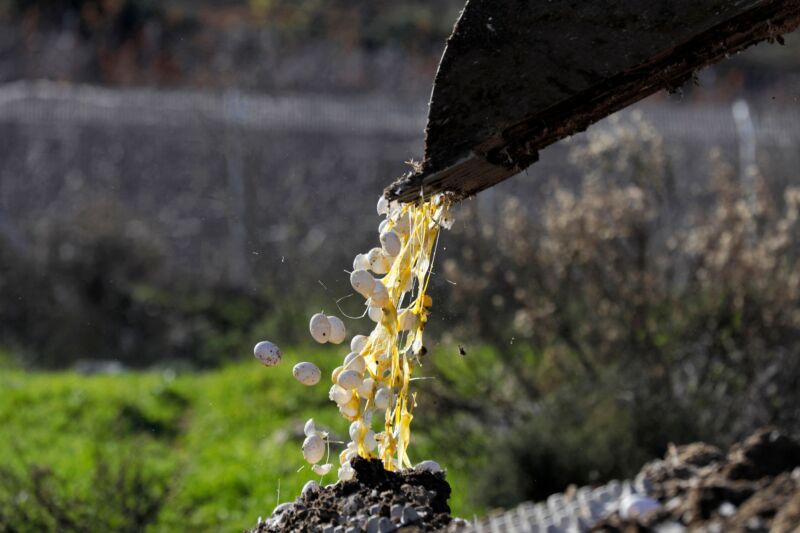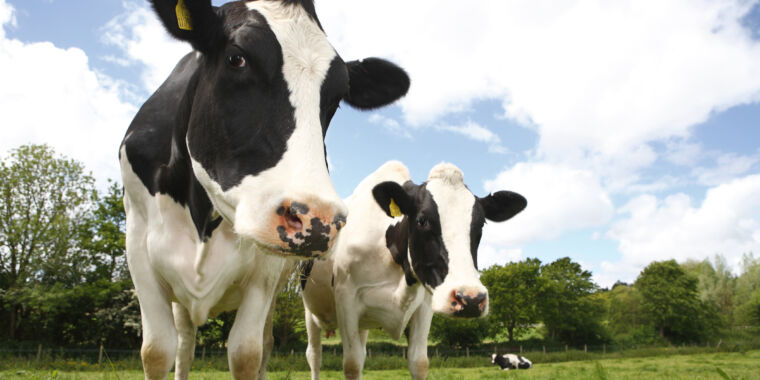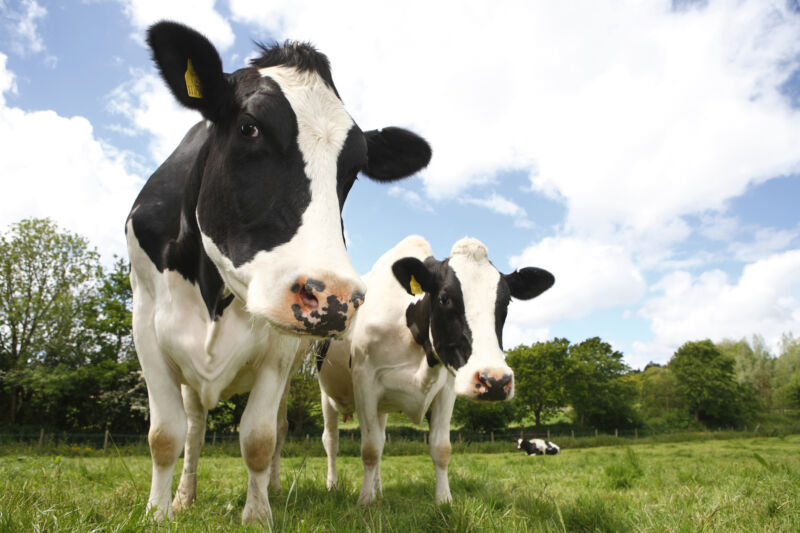Cats suffer H5N1 brain infections, blindness, death after drinking raw milk
Spillover —
Mammal-to-mammal transmission raises new concerns about the virus’s ability to spread.
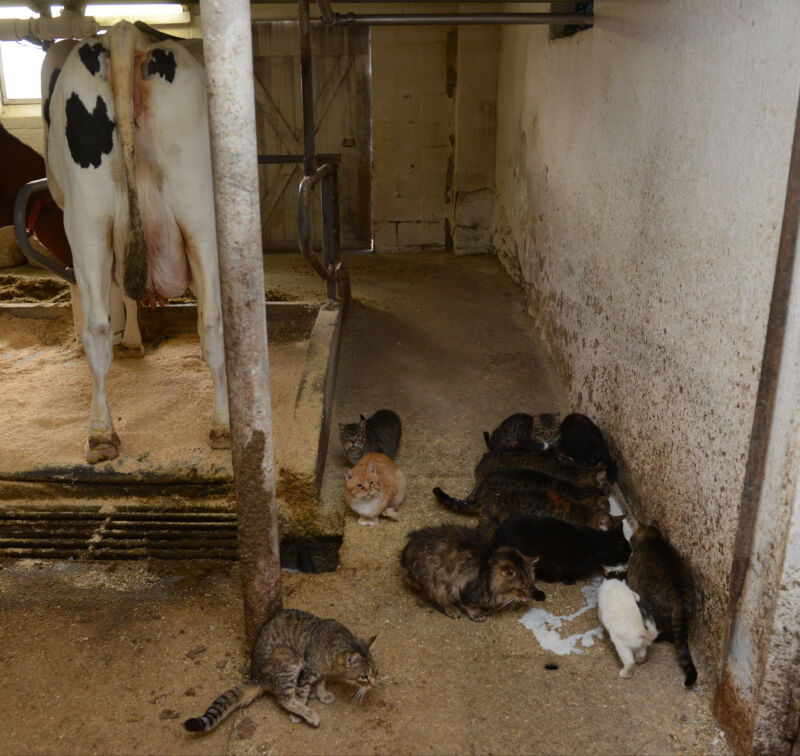
Enlarge / Farm cats drinking from a trough of milk from cows that were just milked.
On March 16, cows on a Texas dairy farm began showing symptoms of a mysterious illness now known to be H5N1 bird flu. Their symptoms were nondescript, but their milk production dramatically dropped and turned thick and creamy yellow. The next day, cats on the farm that had consumed some of the raw milk from the sick cows also became ill. While the cows would go on to largely recover, the cats weren’t so lucky. They developed depressed mental states, stiff body movements, loss of coordination, circling, copious discharge from their eyes and noses, and blindness. By March 20, over half of the farm’s 24 or so cats died from the flu.
In a study published today in the journal Emerging Infectious Diseases, researchers in Iowa, Texas, and Kansas found that the cats had H5N1 not just in their lungs but also in their brains, hearts, and eyes. The findings are similar to those seen in cats that were experimentally infected with H5N1, aka highly pathogenic avian influenza virus (HPAI). But, on the Texas dairy farm, they present an ominous warning of the potential for transmission of this dangerous and evolving virus.
The contaminated milk was the most likely source of the cat’s fatal infections, the study authors concluded. Although it can’t be entirely ruled out that the cats got sick from eating infected wild birds, the milk they drank from the sick cows was brimming with virus particles, and genetic data shows almost exact matches between the cows, their milk, and the cats. “Therefore, our findings suggest cross-species mammal-to-mammal transmission of HPAI H5N1 virus and raise new concerns regarding the potential for virus spread within mammal populations,” wrote the authors, who are veterinary researchers from Iowa, Texas, and Kansas.
The early outbreak data from the Texas farm suggests the virus is getting better and better at jumping to mammals, and data from elsewhere shows the virus is spreading widely in its newest host. On March 25, the US Department of Agriculture confirmed the presence of H5N1 in a dairy herd in Texas, marking the first time H5N1 had ever been known to cross over to cows. Since then, the USDA has tallied infections in at least 34 herds in nine states: Texas, Kansas, Michigan, New Mexico, Idaho, Ohio, South Dakota, North Carolina, and Colorado.
The Food and Drug Administration, meanwhile, has detected genetic traces of H5N1 in roughly 20 percent of commercial milk samples. While commercial milk is still considered safe—pasteurization is expected to destroy the virus and early testing by the FDA and other federal scientists confirms that expectation—the finding suggests yet wider spread of the virus among the country’s milk-producing cows.
Cows are only the latest addition to H5N1’s surprisingly broad host range. Amid a global outbreak over the past several years that has devastated wild bird populations and poultry farms, researchers have documented unexpected and often deadly outbreaks in mammals. Since 2022, the USDA has found H5N1 in over 200 mammals, from big cats in zoos to harbor seals, mountain lions, raccoons, skunks, squirrels, polar bears, black bears, foxes, and bottlenose dolphins.
“The recurring nature of global HPAI H5N1 virus outbreaks and detection of spillover events in a broad host range is concerning and suggests increasing virus adaptation in mammals,” the authors wrote. “Surveillance of HPAI viruses in domestic production animals, including cattle, is needed to elucidate influenza virus evolution and ecology and prevent cross-species transmission.”
In the meantime, it’s definitely not the time to start drinking raw cow’s milk. While drinking raw milk is always dangerous because it carries the threat of various nasty bacterial infections, H5N1 also appears to be infectious in raw milk. And, unlike other influenza viruses, H5N1 has the potential to infect organs beyond the lungs and respiratory tract, as seen in the cats. The authors of the new study note that a 2019 consumer survey found that 4.4 percent of adults in the US consumed raw milk more than once in the previous year, suggesting more public awareness of the dangers of raw milk is necessary.
Cats suffer H5N1 brain infections, blindness, death after drinking raw milk Read More »
